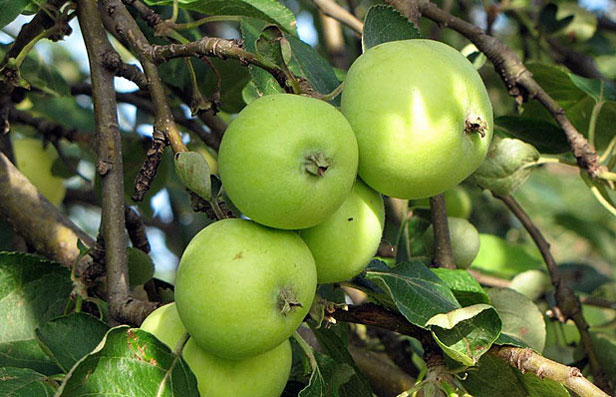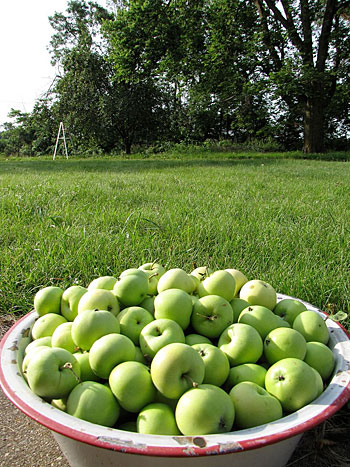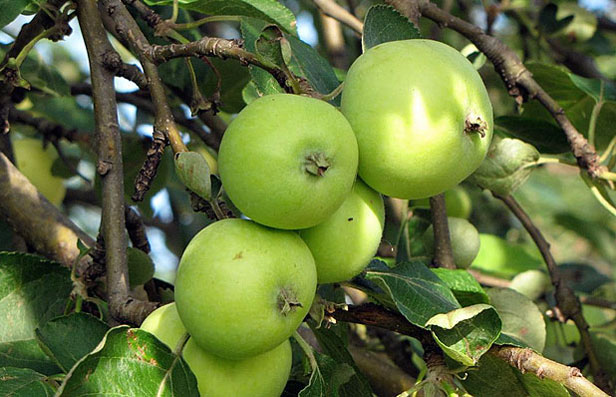 These apples might look green, but they’re perfectly ripe — and begging to be picked.(Steph Larsen photos)
These apples might look green, but they’re perfectly ripe — and begging to be picked.(Steph Larsen photos)
 I have my work cut out for me.When nature calls on the farm, we listen. Meaning, when a fruit with a short shelf life becomes suddenly ripe, there’s no choice but to drop everything else.
I have my work cut out for me.When nature calls on the farm, we listen. Meaning, when a fruit with a short shelf life becomes suddenly ripe, there’s no choice but to drop everything else.
Did you know there are 7,500 cultivated varieties of apple? Tart or sweet, red, green, and yellow. Some are good for pies, others for sauce, still others store well right through the winter and give you a crisp mouthful in the middle of January.
I usually think of apples as a fall crop, but since surprises are abundant this first year on the farm, I shouldn’t have been shocked to learn that growing in my yard is one of the few yellow apple varieties that ripens by the beginning of July.
Once again, I’m totally unprepared.
Not that I’m ungrateful — on the contrary, I am so excited to have plenty of food everywhere I turn. It’s just that I expected to ease into abundance this first year, and I’ll admit it’s a little overwhelming.
We just finished processing the cherries, and the tomatoes haven’t yet started, so I was enjoying a bit of respite. I was casually researching pressure canners and kitchen scales, thinking I had a bit of time before I needed them. This weekend we had family visiting, and when it rained we painted the bedroom. That feels quite frivolous about now.
We’ve been casually watching the progress of all our fruit trees, and it was with some confusion that we noticed some of the little yellow apples were bursting. A closer inspection and some taste tests revealed that for this particular tree, yellow means overripe and mealy, while green-with-just-an-inkling-of-yellow equals firm and crispy.
It seems this particularly loaded tree is a Lodi apple. These small, tart fruits make a tasty golden sauce but store very poorly, so picking and processing must be done in a fluid dance for the optimum effect.
I best get to it. What’s your favorite sauce recipe?




